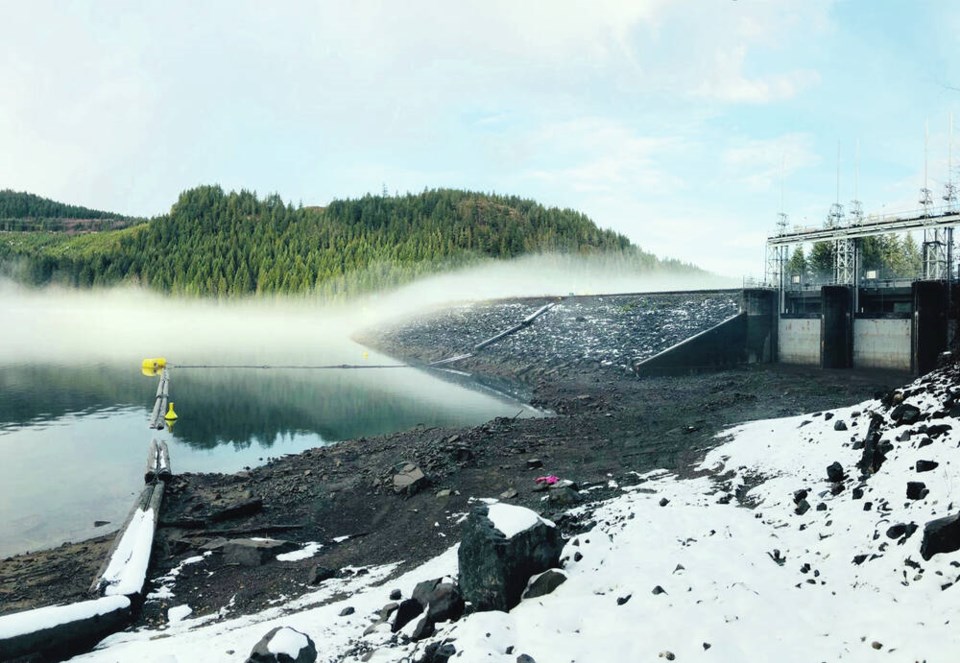Parts of British Columbia known for towering rainforests and endless days of winter precipitation are experiencing some of the driest conditions on record.
Both the Sunshine Coast and east side of Vancouver Island face persistent water shortages as below-average precipitation fails to replenish reservoirs drained by the fall drought.
“This is the driest fall season on record for all Vancouver Island hydroelectric watersheds,” said sa╣·╝╩┤½├Į Hydro spokesman Stephen Watson.
Watson said the amount of water flowing into reservoirs near Campbell River has dropped below a third of normal levels, the lowest in 54 years. Rainfall, meanwhile, hasn’t been this low for 42 years, he said. Similar trends have been recorded in the Ash, Jordan and Puntledge watersheds, where sa╣·╝╩┤½├Į Hydro has other reservoirs.
That’s led to Stage 2 watering restrictions in the Comox Valley Regional District, an “uncharted” measure during December, which is normally among the region’s wettest three months, said Watson.
Mount Washington ski resort said this past week that its wells are supplying much less water than usual and asked customers to limit water use and to bring their own bottled water.
Greater Victoria is under less pressure. There has been less precipitation than usual — around 700 millimetres for the year so far, while a full year is typically about 880 millimetres. But the Sooke reservoir is at 67 per cent and there are no water-use restrictions.
But the Sunshine Coast Regional District’s Emergency Operations Centre said , the highest level, are in place for the Chapman Water System — the region’s main source of municipal water.
“Due to 100 days of drought, followed by immediate freezing at our main water sources, Chapman and Edwards Lakes, we have been in a period of relative unknown for the past few weeks,” wrote a spokesperson in a .
A series of wet weather deflections
Environment sa╣·╝╩┤½├Į meteorologist Lisa Erven said a lack of rainfall continues to affect large swaths of the province.
“We’ve had a precipitation deficit for many months now,” she said. “It not going to be fixed with one storm.”
Between August and the third week of October, Erven said, warm ridges of high pressure deflected many of the wet weather systems that normally hit sa╣·╝╩┤½├Į at that time of year.
Vancouver and Kelowna reported just over half their normal precipitation during the first three months of fall. In places like Campbell River and Comox, seasonal rainfall dropped to a third of what it is in a normal year.
Now, Erven said, high-pressure ridges dipping down from the Canadian Arctic are acting as another shield, blocking wet weather and creating colder-than-normal conditions in many places.
Despite the colder-than-usual weather, snowpack varied vastly across the province in recent weeks, with some regions and rivers receiving well below their average. As of Dec. 8, sa╣·╝╩┤½├Į’s River Forecast Centre said was less than two-thirds of normal on Vancouver Island and the upper Squamish River at this time of year.
When precipitation does fall as snow, it takes longer to recharge reservoirs, making the lack of water worse, said Erven. Unless something changes, Comox is on pace to receive half of the 169 millimetres of precipitation it averages in December.
According to the Weather Network, sa╣·╝╩┤½├Į is facing the .
“The near-term forecast [in the] next two weeks looks dry and cool, which isn’t great,” said Watson. “This is the wettest time of the year. November is our wettest month. January our second-wettest month, and December is the third-wettest.”
A problem for fish and taps
Watson said the record dry conditions are not expected to affect electricity supply on Vancouver Island. sa╣·╝╩┤½├Į Hydro’s integrated grid can divert electricity from generating stations in the Interior, where in some places, snowfall has fluctuated between over 140 and nearly 440 per cent above average over the last month, he said.
A pressing concern is ensuring there’s enough river water for spawning salmon. Watson said sa╣·╝╩┤½├Į Hydro managed to conserve enough water to keep spawning fish swimming through the fall. Now the challenge is ensuring the salmon eggs left behind get what they need.
“It is tenuous. There’s only so much water and these are the coldest months of the year,” he said.
The lack of water has also affected recreation. On the Puntledge River, flow levels have made kayaking impossible so far this year, said Watson.
The sa╣·╝╩┤½├Į Hydro spokesman said the dry streak is the latest swing in a series of seasonal extremes — a pattern expected to deepen as human-caused climate change further influences global circulation patterns.
This time last year, the reservoirs on Vancouver Island were essentially full, spilling water downstream of their dams.
“And then it turned very dry for about three, four months. And then it turned very wet for the spring and early summer. Now, we’re in this cycle of very dry conditions,” Watson said. “We’ve had these wild swings and weather over a three-, four-month period of wet, dry, wet, dry.”
Campbell River reservoir is now about five to six metres lower than it was at this time of year in 2021, said Watson. “This is a fall season we’ve never seen before,” he said. “It’s a very odd scenario.”
>>> To comment on this article, write a letter to the editor: [email protected]



